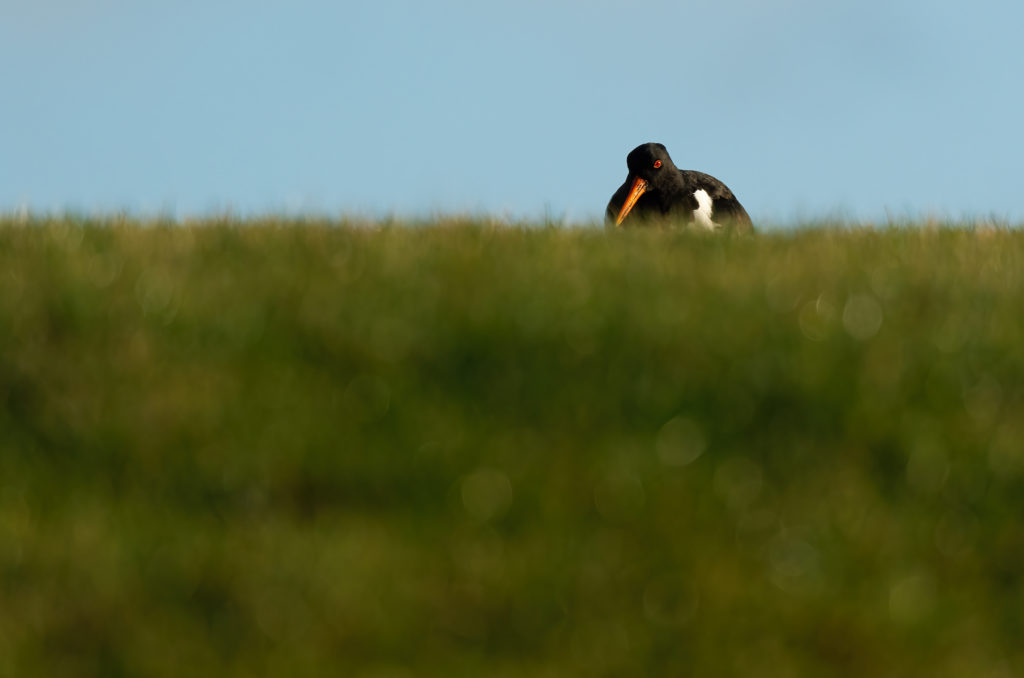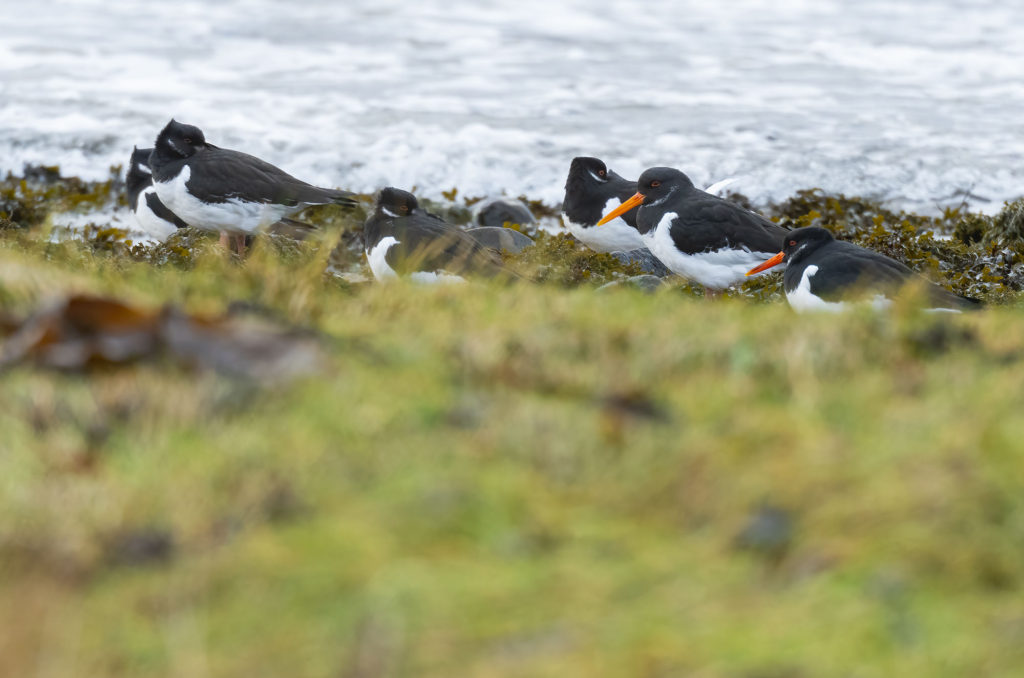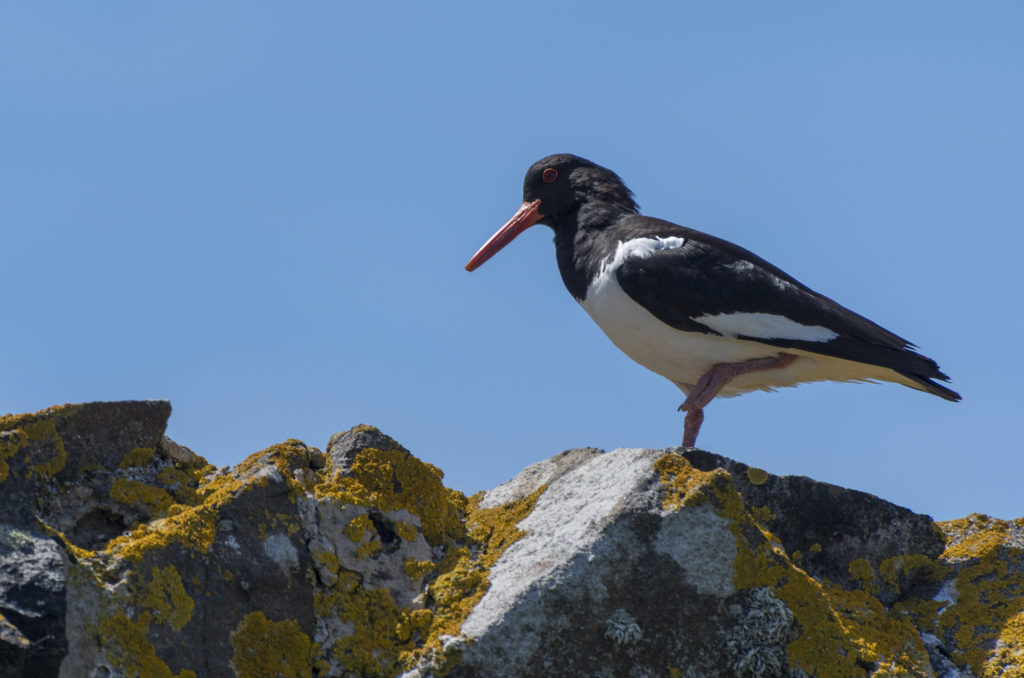Last month, Winterwatch showed a stunning film about oystercatchers. I was particularly interested to hear that a flock of oystercatchers is known as a “parcel”. After getting the lowdown on these birds, I wanted to talk about getting down low to watch them.
The Winterwatch film showed the oystercatchers moving from the St Andrews coastline to feed on worms on nearby football pitches when the tide came in. I noticed that this species employed that tactic on a recent walk at Ayr beach. A parcel of oystercatchers was feeding on the green next to the esplanade, which provided me with the perfect opportunity to capture an image I had envisioned some time ago.
Trying a new perspective with an oystercatcher
If you enjoy photographing wildlife, you’ll know the importance of getting down to the eye level of your subject. That change in perspective can make a huge difference to the impact of your image, adding a feeling of intimacy. But it’s not always easy. I have stretched out in many puddles to try and get down to the height of the bird I’m capturing! But on this occasion, I didn’t have to. The green the oystercatcher above was feeding on is up a small flight of steps from the main esplanade. So, my subject was slightly above my eye level as I stood on the path. I had noticed this opportunity on previous visits but hadn’t had the right subject or light to give it a go. There were still a couple of tricky elements to negotiate; making sure I got close enough while avoiding flushing the bird and the strength of the wind gusts that were buffeting my long lens. The effort to hang on to my lens was worth it, with the wet grass sparkling in the out-of-focus foreground and the striking bird standing out against the clean background of the blue sky. It’s a worm’s-eye view.

Keep your distance
Waders are difficult subjects to capture at eye level. Short of digging a trench in the sand, in many situations your best bet will be to lay down on your stomach and hope for the best (we’ve all been there). If you don’t fancy taking your chances with the tide, keep your eyes open for opportunities to sit down further away from the birds and utilise your zoom lens. Zooming in from a distance in a seated or crouched position can create an eye-level perspective. For the image below, I was sitting on a piece of driftwood further up the beach. You’re also minimising the risk of disturbing the birds by being further away.

Elevate your subject
Also, look for opportunities for unusually elevated subjects, like the oystercatcher on a wall shown below. I don’t feel that this image has the impact of the oystercatcher on the green as the bird is above eye-level, so it lacks the connection, but it is interesting to see the detail in the bird’s raised foot.

These images demonstrate that being aware of opportunities to photograph an elevated subject can make all the difference, and being further away from a flock isn’t always a bad thing. You certainly don’t have to sprawl in the sand to get the intimate images of waders that you crave … unless that’s something you enjoy, of course!

